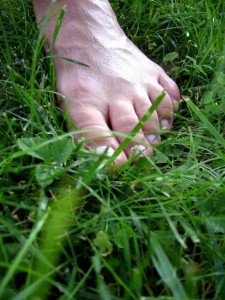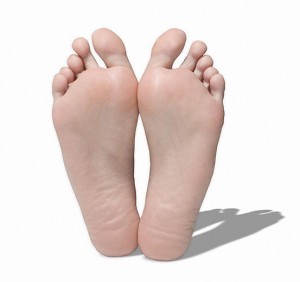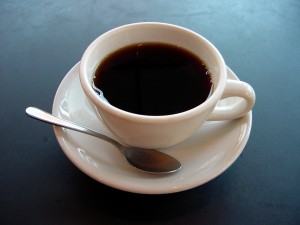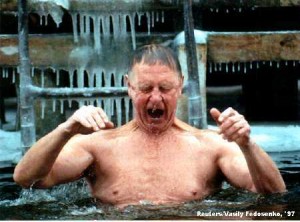I think it’s important to analyze any trend or issue from several viewpoints. In the world of fitness and nutrition we see all sorts of fads come and go. Today barefoot running is gaining in popularity. I’ve posted recently on some of the research that suggests barefoot running may be healthier for the joints than shod running. So, I believe it’s worth considering doing some barefoot work whether it be gym work such as weight training or agility work; or perhaps very short runs on a soft surface such as grass. It may in fact be beneficial to work toward a full transition from shod running to barefoot running. That said, it’s vital to consider other views.
First, the Science of Sport gives us Barefoot running – new evidence, same debate. One notable point the writers make is this:
“I guarantee that the media are going to be all over this and they are going to tell you that you should be running barefoot or in Vibrams. You will hear how science has proven that being barefoot will prevent injuries, and that those of you who are injured should blame your shoes as you lob them into the garbage bin.
(This sort of observation can go for just about every new study that’s reported in the press.) I think it’s entirely likely that runners may latch on to barefoot running thinking that it’s an instant magic cure for whatever is bothering them and the results may be disastrous. (Then what will the press, physical therapists, and podiatrists say? “Barefoot running is the worst thing in the world! No one should do it ever! Then we’ll have discarded a potentially helpful tool from our toolbox.)
The article goes on to give an example of what happens when the pendulum swings too far and runners adopt something very new and very different into their training:
“And I will illustrate this with our own insight into footstrike and injury. When the Pose research was done in Cape Town, athletes basically had their footstrike patterns changed through 2 weeks of training in the new method. The biomechanical analysis found lower impact forces (sound familiar? Same as the Nature paper), and even less work on the knee joint. This was hailed as a breakthrough against running injuries, because lower impact plus lower work on the knee meant less chance of injury. Jump ahead 2 weeks, and 19 out of 20 runners had broken down injured. Why? Because their calves and ankles were murdered by the sudden change. And the science showed this – the work on the ANKLE was significantly INCREASED during the forefoot landing.”
Thus we get the very clear point that barefoot work must be added gradually into your routine. A rapid switch in running technique is probably a very bad idea. DO NOT move rapidly to replace all your shod miles with barefoot miles.
Over at the Running World According to Dean you can read Another Barefoot Running Story. He seems a bit skeptical on the issue of barefoot running. Owen Anderson at Educated Runner has presented two posts on barefoot running: Barefoot, Nearly Barefoot and Bearfoot Running; and Barefoot Running: What the Harvard Study Really Said. Both articles are again somewhat skeptical of barefoot running and running in Vibrams. Anderson’s second post is most valuable I believe in that he points out some of the limitations of the study “Foot Strike Patterns and Collision Forces in Habitually Barefoot versus Shod Runners” that appeared recently in the journal Nature.
Anderson makes this point: “The Nature investigation did disclose some interesting information about the effective mass of the foot and shank (which we won’t discuss here), but it offered no other information about the potential links between barefoot running and either injury or performance.”
He’s correct. This study was not a long term study. The study indeed showed lower impact forces at the ankle, knee and hip during barefoot running when compared to shod running, however the runners were not observed over the long term. Thus we only know what happened during the short duration of the study. This situation is indicative of most barefoot running studies. Nor did the study investigate which method–barefoot or shod–results in the fastest performances.
Further studies should be conduced looking at several points. First, long-term studies should look at injury rates of shod runners compared to barefoot or minimally shod runners. Second, we need to move beyond injury issues and look at racing performance. In other words can we run faster barefoot/minimally shod or in shoes? Third, it might be interesting to see how many people have tried to convert from running shoes to barefoot running but were unsucessful. What happened to these people?
From my point of view, none of these other posts or viewpoints have changed my thinking that some degree of barefoot work is very likely healthy for a fair number of people. It’s not necessary for anyone to permanently discard their running shoes for bare feet, but perhaps it would be valuable to consider taking the shoes off from time to time and letting the feet behave like feet.





